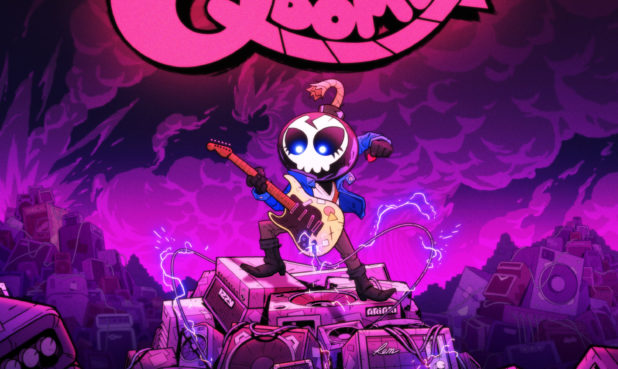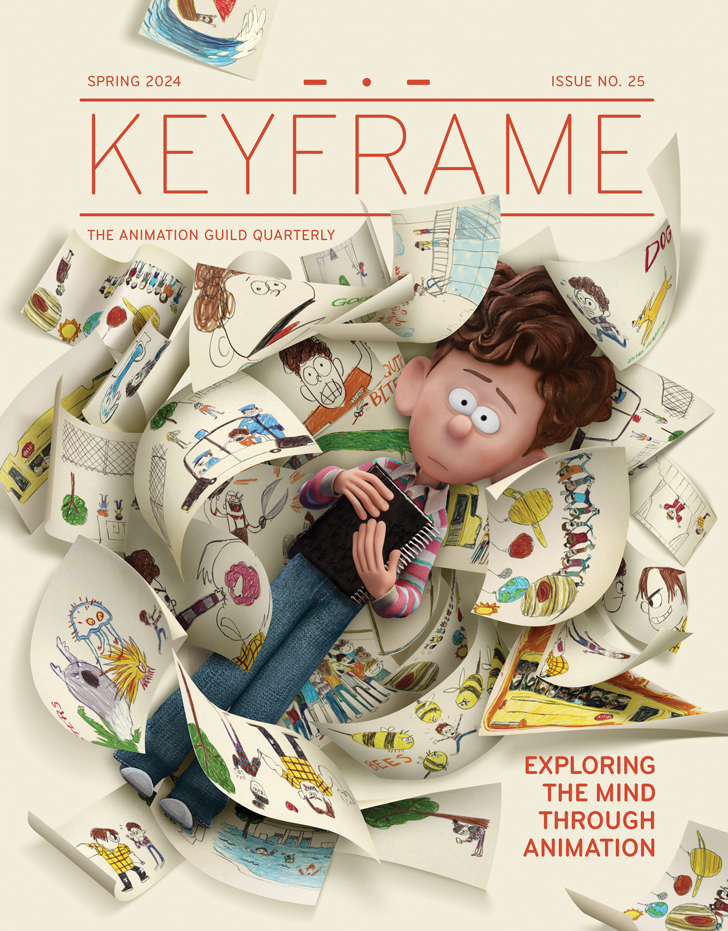
On most days, Angelo di Nallo works as a Storyboard Artist on Bob’s Burgers, but some evenings you’ll find him performing stand-up at Flappers Comedy Club dressed in a wardrobe that’s bright and colorful—just like his disposition. The animator and stand-up comic always wears vibrant colors and embellishes each look with a rainbow lei, which he’s worn daily for years, ever since he experienced a mind- and life-altering encounter at a transformational arts and music festival.
After dropping out of multiple trade schools in the early aughts, di Nallo got his start in animation when a friend told him Nickelodeon was taking pitches for shows. With his teacher Jason Plapp, he co-created Bradwurst, a cartoon about a sausage whose best friend is a fish. The short sold and soon after he landed at Titmouse, working as an Assistant Animator.
While attending a hybrid comedy/animation event hosted by Titmouse, di Nallo followed a spontaneous urge to take the stage himself. “I was watching all of the comedians do their jokes and everybody laughing,” he says. “For whatever reason, in my mind I was like, ‘I could do this. This doesn’t look that hard.’”
After the show ended, he approached the host and asked if he could tell a joke onstage. The host said sure, why not? His first joke was met by virtual silence. “Nobody laughed, and I realized, oh my God, this is the worst mistake ever,” he says. But he kept going. “I told another joke, and they started laughing.” Eventually, he won over the crowd. From that moment he caught the bug.
“In my first sets, my jokes were just very bizarre. There were so many things I didn’t know or understand… I [hung out] with some circles of pretty well-known comics… I had a mentor, and I felt a lot of pressure to perform every night—but I also had my animation career.”—Angelo di Nallo
Comedy became an outlet for di Nallo’s pain, even as he hid from the truth behind his jokes. For almost two decades he struggled with chronic diarrhea. “It was living hell,” he says. The illness started right after di Nallo experienced sexual trauma at a very young age, but it took a long time to get to the root of the issue.
One day, after years of therapy, he took psychedelic drugs at the Lucidity Festival that led to an unexpected, yet welcoming, outcome. “I was talking to my body like, ‘Hey, you’ve been holding onto this hurt for 20 years. It’s time to let it go,’” he remembers. “The next day, I didn’t have to go to the bathroom. It’s been over six years now.”
At the time, he was wearing a rainbow lei. “Since then, it’s just been kind of like a silent ‘thank you’ to life for healing me,” he says. The lei inspired friends to give him rainbow clothing, and he discovered that the vivid colors attracted positive energy. People walked up to him on the street and said, “You just brightened my day.”
But when he first started out in comedy, he stuck to just one color in his material: blue.
“[Blue jokes are] crude or shocking,” he explains. “I’ve been told a lot of young comics will do that to get attention when they’re first starting out. I guess I was doing that, too, but now I mostly just try to make the boring parts of my life funny.”
Di Nallo says he’s now in a good place. “It was only after my healing that I was able to embrace my pain and then tell my truth through comedy. But it’s been a lot to unravel for sure,” he adds. “In my first sets, my jokes were just very bizarre. There were so many things I didn’t know or understand.”
While he describes his current personal brand of comedy as “quirky and sweet,” that shift toward lightheartedness has been a struggle. “It’s really hard to be happy when you’re in any kind of pain,” he says. “Life’s hard enough. To add a chronic illness on top of it, it just doesn’t seem fair. It’s hard to have a positive outlook.”
In the 10 years since that first night on stage, he’s performed more times than he can count before all manner of audiences. “When I first started doing comedy, I [hung out] with some circles of pretty well-known comics,” he says. “I had a mentor, and I felt a lot of pressure to perform every night—but I also had my animation career.” He’d come home well after midnight and then get up for his “regular job.”
“It was a confusing time because I was still kind of young in my animation career and trying to figure out what I’m doing with this life,” he says. He felt like he was being pulled in two different directions, but he ultimately stuck with animation and takes to the stage every month or so.
Reflecting on how he’s evolved as a comedian over the years, he says: “Since I started doing more lighthearted sets, the audience doesn’t laugh as hard. But they come up after and say, ‘That really touched me. I really needed to hear that. Thanks for sharing.’ That’s become more important to me than the laughs.”
Di Nallo’s stand-up schedule can be found at his website.







.png)